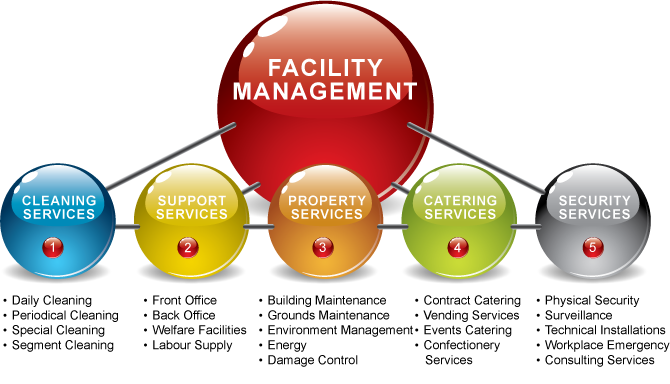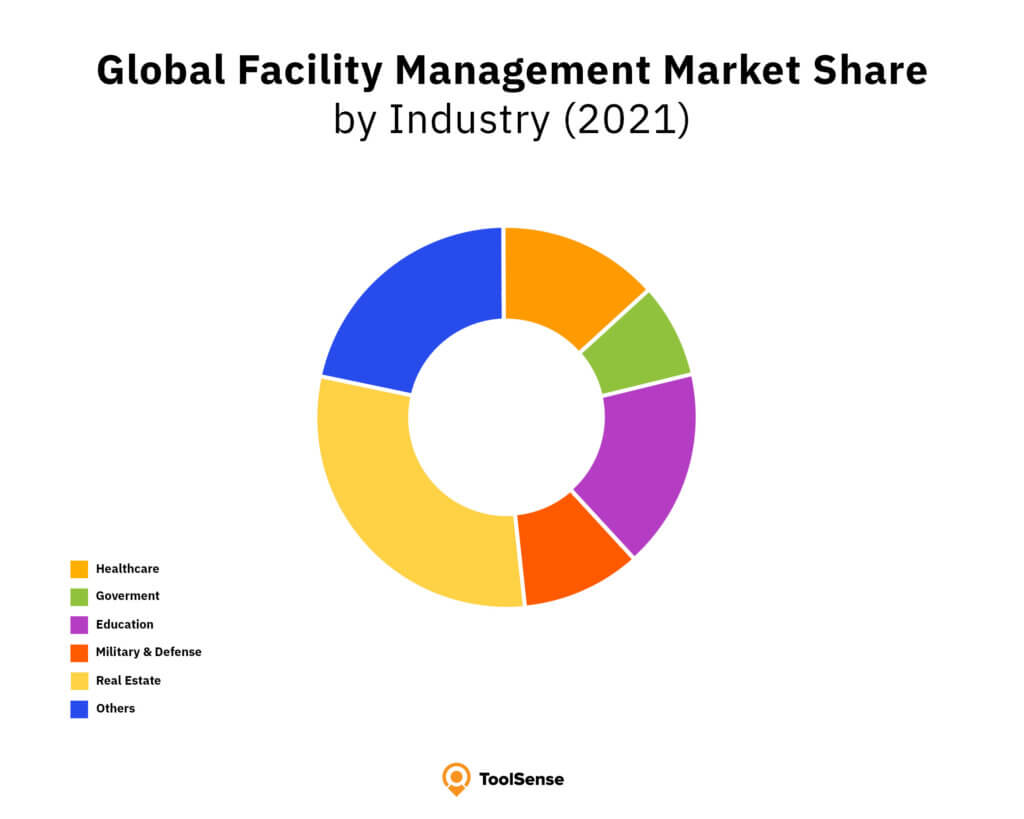Secret Trends Forming the Future of Facility Administration in 2024
As we look in advance to 2024, the landscape of center management is poised for substantial change, driven by a number of vital fads. The combination of smart structure modern technologies and a change towards data-driven decision-making promise to boost functional efficiency while prioritizing sustainability in method.
Smart Building Technologies

Smart building innovations include a vast range of systems, consisting of intelligent lighting, a/c controls, and safety systems. By integrating these systems, facility managers can check and adjust criteria in real-time, resulting in substantial reductions in power waste and operational prices. For example, wise sensors can spot tenancy levels and readjust lights and temperature as necessary, ensuring that power is just used when needed.
Additionally, these innovations facilitate boosted information collection, allowing organizations to track use patterns and identify opportunities for more renovations. The application of smart structure modern technologies not only contributes to sustainability objectives yet additionally develops much healthier job environments that can improve worker productivity and fulfillment.
As we relocate into 2024, the fostering of smart building modern technologies will likely speed up, showing a more comprehensive change in the direction of more intelligent, receptive, and lasting center administration practices.
Data-Driven Decision Making
Progressively, companies are leveraging data-driven choice making to boost center administration practices. By harnessing information analytics, center managers can obtain workable insights that substantially improve functional effectiveness and resource allowance. The integration of advanced technologies, such as IoT sensors and real-time monitoring systems, enables the collection of huge quantities of information on structure efficiency, tenancy prices, and energy usage.
This riches of info allows facility supervisors to recognize patterns, forecast upkeep needs, and proactively address problems prior to they escalate. As an example, anticipating analytics can forecast tools failures, reducing downtime and repair work expenses. Additionally, information visualization devices help with far better communication amongst stakeholders, guaranteeing that notified choices are made collaboratively.
Furthermore, data-driven approaches boost tactical preparation by enabling facility managers to analyze the efficiency of current practices and make informed choices concerning financial investments in innovation or infrastructure. As organizations significantly focus on functional excellence, data-driven decision making is poised to come to be a cornerstone of successful facility administration strategies in 2024 and past. Ultimately, the capability to leverage data efficiently will encourage organizations to create much more efficient, productive, and resistant facilities.
Sustainability and Green Practices
The emphasis on data-driven choice making normally aligns with the expanding concentrate on sustainability and environment-friendly techniques within facility administration. As companies increasingly prioritize ecological duty, facility supervisors are leveraging analytics to maximize resource use, lower waste, and decrease carbon impacts. This critical approach allows the assimilation of energy-efficient systems, such as LED lighting, smart cooling and heating controls, and renewable resource resources into facility operations.
Additionally, the implementation of lasting practices prolongs beyond power intake. Facility managers are promoting and embracing eco-friendly products recycling campaigns to create a circular economic climate within their centers. This not just boosts the ecological profile of the organization but additionally promotes a culture of sustainability amongst employees.
Conformity with ecological guidelines is one more vital element driving the adoption of environment-friendly methods. By utilizing information analytics, facility supervisors can keep track of compliance original site metrics and recognize areas for renovation, guaranteeing adherence to international and neighborhood sustainability criteria.
Crossbreed Work Versions
A considerable change towards crossbreed work versions is reshaping the landscape of center management in 2024. This standard incorporates remote and in-office work, necessitating a reevaluation of space application, resource allowance, and worker interaction techniques. Organizations are progressively recognizing the relevance of flexible work spaces that accommodate varied requirements and choices.
Center managers have to adapt by applying functional workplace layouts that support joint initiatives while providing areas for concentrated job. This consists of the combination of modern technology to help with seamless communication and cooperation amongst in-office and remote employees. Smart building solutions, equipped with analytics and sensors, enable real-time monitoring of area usage, making it possible for organizations to maximize their atmospheres effectively.
Additionally, crossbreed work versions highlight the need for effective facility monitoring that prioritizes staff member experience. In significance, the hybrid work model is revolutionizing facility management, urging a proactive strategy to fulfill the advancing demands of the labor force.
Enhanced Resident Health
As companies embrace hybrid work versions, a heightened concentrate on owner health is ending up being important to facility management strategies. Facility Management. This change acknowledges that a satisfied and healthy and balanced workforce straight influences productivity and retention rates. Facility supervisors are currently prioritizing atmospheres that advertise physical and psychological well-being, integrating components such as natural lights, biophilic design, and easily accessible wellness resources

Technology plays an essential duty in this development. Smart structure systems can monitor ecological aspects and adjust setups in real-time, making sure optimal convenience degrees - Facility Management. Comments systems, such as occupancy sensing units and employee studies, permit center supervisors to consistently fine-tune wellness campaigns based on passenger demands.

Verdict
In 2024, the future of facility administration will be substantially affected by the integration of wise structure modern technologies and data-driven decision-making, promoting enhanced functional performance. Sustainability efforts will focus on eco-friendly practices, while the appearance of crossbreed job models will necessitate flexible workplace designs. An enhanced emphasis on resident health via sophisticated Cooling and heating systems and biophilic style will contribute to much blog here healthier job settings. These fads jointly emphasize the evolving landscape of facility management in response to contemporary challenges and opportunities.
Center managers are adopting environment-friendly products and promoting reusing efforts to produce a round economy within their facilities.A official source substantial shift in the direction of hybrid job designs is reshaping the landscape of center management in 2024.Furthermore, crossbreed work versions highlight the need for reliable center management that prioritizes worker experience.As organizations welcome hybrid job models, an enhanced emphasis on resident health is ending up being indispensable to facility monitoring techniques.In 2024, the future of center management will certainly be substantially influenced by the assimilation of smart building technologies and data-driven decision-making, fostering enhanced functional performance.